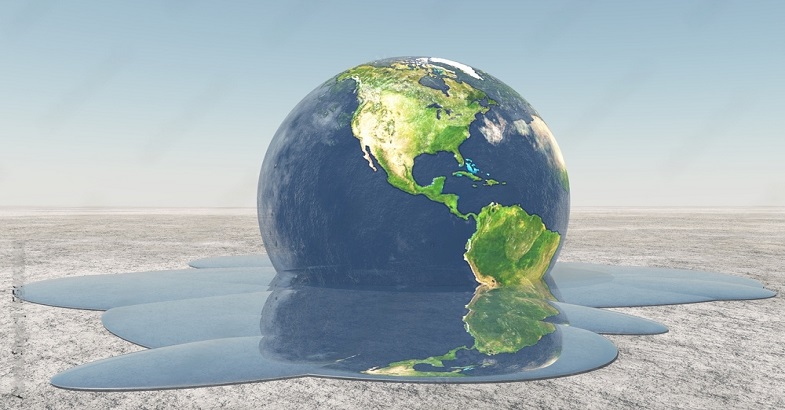
The blog explores the multidimensionality of climate change and possible remedies which can be employed to mitigate its repercussions. This is a condensed version of the article which won the first prize in the Don Bosco National Essay Writing Competition 2022. This article tries to highlight the phenomenon of climate change and the inevitability of its repercussions globally. It argues for adopting sustainable development, innovation and recognition of climate responsibility as a means to cope with the aberrations caused by environmentally blind economic development, rising population, and ever-increasing emissions.
Climate change has become an increasingly pertinent issue in the current globalised world. While we have been ignorant of this phenomenon for centuries, its impacts have compounded, resulting in massive calamities worldwide. Humans’ role in engendering and fuelling deviations in climate patterns is central to the current global climate change discourse. Crutzen and Stoermer (2000) argue that humans have become a geological force on their own. The international climate research community argues that humans have become so decisive in their influence on the global geophysical cycles of the earth that we now face aberrations in the functioning of the crucial earth systems. We have destabilised the energy balance of our planet by emitting greenhouse gases such as CO2, NO2, and CH4, ruptured the Ozone layer by adding hazardous chlorine derivatives, hindered the biogeochemical cycles including sulphur, nitrogen and phosphorus, and influenced the crucial water cycle by building dams and changing land-use pattern.
Leading Causes
Emissions as a Result of Neo-Liberal Economic Development
Economic development has its genesis in the industrial revolution, which established industries worldwide, created new settlements, and instigated a race for developmental hegemony among countries. Humans have always been in pursuit of sources of energy. With time we have vacillated between different sources in the form of wood, coal, and petroleum. As industrialisation spread across the world, fossil fuel emissions began to rise at an unprecedented rate for the first time in the history of the blue planet. The CO2 emissions were at 276 PPM in 1750, which increased to 311 in 1950.
Moreover, the 20th-century political and social structure pushed for rapid industrialisation, which resulted in even higher levels of emissions of CO2, which now stand at 412 PPM. The atmospheric concentrations of methane and nitrous oxide have increased from approximately 700 to 1700 PPB and 270 to 320 PPB from 1750 levels. The relentless increase in fossil fuel emissions has deviated the earth from its new energy balance due to the incorporation of anthropogenic emissions of the gases mentioned above. However, despite umpteen negatives, the industrial revolution increased people’s earnings, raising their standard of living and access to better healthcare facilities. From 1950-2000, the scientific community called Great Acceleration, and the population grew from three to six billion. The population increase is problematic because it requires increased food production, depletion of natural resources, and vulnerability of livelihood, which all contribute to global climate change. The impact of the population was rightly summed by Paul R. Ehrlich in 1968, “Population growth, along with over-consumption per capita, is driving civilisation over the edge: billions of people are now hungry, or micronutrient malnourished, and climate disruption is killing people.”
Climate Deniers: A Case of Short-Sightedness
Climate scepticism has been one of the most detrimental factors of global climate change. It challenges the notion of climate change by questioning its very existence. These sceptics are well-organized and patronised by the proponents of neo-classical economic ideologues. These people deny the phenomenon of climate change by funding agencies to establish their agenda. Moreover, they even try to change the very nature of the climate crisis into a technical issue and address it in pursuit of profits. For instance, the New York Manure problem due to horses being used as a means of transport led to the first environmental summit in history, called by the Mayor of New York. After this summit, cars were introduced as a green solution to the manure problem, ignorant of the damaging impact that the so-called green solution would have in centuries to come.
Remedies
The doctrine of common but differentiated responsibilities.
Climate change is a multi-dimensional issue to be addressed on umpteen strata. The impacts of climate change vary in different regions of the world based on the capacity of the vulnerable population. For instance, excessive monsoon rains and melting glaciers caused the catastrophic Pakistan Flood in 2022, which caused massive destruction of lives, and 3.2 trillion in damage to the country. Droughts have become more frequent in the Horn of Africa. The recent COP27 agreed on a milestone agreement for the Loss and Damage Fund, ensuring funding for countries vulnerable to climate change calamities. Therefore, climate justice could become a promising remedy to the menacing issue of global climate change.
Adapting and Mitigating the Repercussions through Sustainable Development and Geo-Engineering
The current world order is witnessing a race between nations regarding economic development. Amidst this chaos, environmental concerns have gone in the background. Therefore, sustainable development is the way to go forward to have development and climate change mitigation hand-in-hand. Sustainable development envisages economic activity without hindering ecological and social sustainability. Practically, it is not impossible to resist development; however, there is a need for a kind of development which leads to progress recognising human activities’ impacts on climate, such as GHG emissions. Thus, if sustainable development is adopted as a top-bottom approach, climate change could be addressed worldwide. Moreover, the issue of climate change has become one of the most frequent topics of discussion; it has attracted a plethora of research and development in its domain. For instance, the addition of sulphate particles in the stratosphere has been on the list. Scientists advocate this method as sulphate particles scatter the incoming solar radiation and increase the cloud cover by making water vapour condense around them, reducing the amount of sunlight reaching the troposphere, which lowers the earth’s temperature. Carbon Capture and Storage (CCS) is another much-talked-about technology which reduces the CO2 emissions from industrial processes by storing gases in deep pits and geological formations.
Conclusion
The realm of global climate change has umpteen roots to it, and each root brings with it new challenges. Therefore, to address the issue of climate change, we need to reconsider our path in various domains. There needs to be regular efforts to reduce emissions of gases like carbon dioxide, nitrous oxide, and Sulphur dioxide, develop sustainable models of international economic exchanges, and find technologies within the premises of planetary boundaries. As the Club of Rome Report,1970, by MIT researchers showed that with current emissions, population growth, and industrial output, humanity will not be able to sustain itself beyond 2100.

Author Bio: Yasir is a student of Master’s in Environment, Climate Change, and Sustainability Studies at Tata Institute of Social Sciences, Mumbai. He is interested in the dynamics of interaction between climate change and umpteen human systems. He writes articles exploring themes at the intersection of climate change, society, vulnerability, migration, climate justice, and differentiated climate responsibility.
DISCLAIMER : The views expressed in this blog/article are author’s personal.

